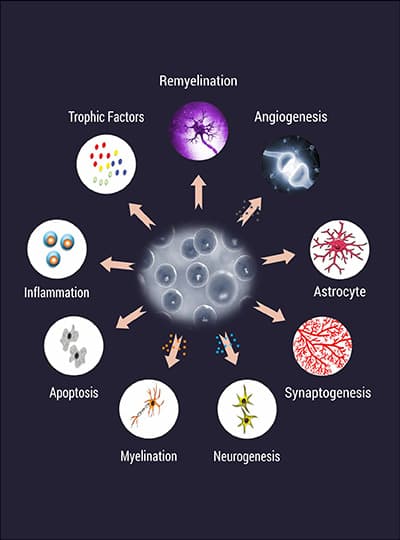
Now that the team knows the identity of the cells that cause inflammation, fibrosis and small airway obstruction, they are hard at work screening them against libraries of drug-like molecules to discover new therapeutics. “The long-overlooked metaplastic lesions in COPD were, in fact, driving the disease rather than merely secondary consequences of the condition,” said McKeon. After the team’s postdoctoral fellow, Wei Rao, transplanted each of the COPD clones into immunodeficient subjects, the team found they not only gave rise to the distinct metaplastic lesions of COPD, but they separately triggered the triad of pathologies of COPD including mucus hypersecretion, fibrosis and chronic inflammation. Xian and McKeon found that, in contrast to normal lungs, COPD lungs were inundated by three unusual variant lung stem cells that are committed to form metaplastic lesions known to inhabit COPD lungs, but seen by many as a secondary effect without a causal link to the pathology of COPD. “In the deep lung, the distal airway stem cells gave rise to both the distal tubes and the alveoli and our research indicates those are the stem cells that make it possible for lungs to regenerate on their own.” Xian and McKeon discovered lung regeneration in 2011 in their studies of subjects recovering from infections by an H1N1 influenza virus that was nearly identical to that which sparked the 1918 pandemic.

Over the past decade, Xian and McKeon developed technology for cloning stem cells of the lungs and airways and have been at it since, noting that different parts of the airways give different stem cells, related but distinguishable. We can try and improve the symptoms, but we don’t have anything that can cure the disease or prevent death,” said UConn Health pulmonologist and critical care doctor Mark Metersky, who gathered the stem cells from lung fluid while performing bronchoscopies.ĭespite its accounting for more deaths than any single disease on the planet, relatively little has been written or understood about the root cause of COPD. The Global Burden of Disease S tudy reports 251 million cases of COPD globally in 2016. “These patients have normal stem cells, though not many of them, but they are dominated by the three variant cells that together make up the disease,” she said.ĬOPD is a progressive inflammatory disease of the lungs marked by chronic bronchitis, small airway occlusion, inflammation, fibrosis and destruction of alveoli, tiny air sacs in the lungs which exchange oxygen and carbon dioxide molecules in the blood. One produces tremendous amounts of mucins which block the small airways, while the other two drive fibrosis and inflammation which together degrade the function of the lung,” Xian reports in the May 14 issue of the journal Cell.

“We actually found that three variant cells in all COPD patients drive all the key features of the disease.

Now they are targeting the cells for new therapeutics. Frank McKeon, professor of biology and biochemistry and director of the Stem Cell Center, and Wa Xian, research associate professor at the center, used single cell cloning of lung stem cells to make their discovery. Two internationally renowned stem cell experts have found an abundance of abnormal stem cells in the lungs of patients who suffer from Chronic Obstructive Pulmonary Disease (COPD), a leading cause of death worldwide.

The long-term aim is the use of the generated respiratory epithelial cells for cell replacement therapies and for the production of bioartificial lung tissue.Wa Xian and Frank McKeon found that three variant cells in all COPD patients drive all the key features of the disease. The sub-project, „Therapy of lung diseases based on pluripotent stem cells“ deals with the production of respiratory epithelial cells from human induced pluripotent stems (iPS cells), which should be supplied for the development of new in vitro assays for toxicological and pharmacological studies. As an alternative source of cells, therefore, endothelial cell types and their precursors from human pluripotent stem cells (hiPS) should be generated. However, it is not possible to supply these amounts, due to the limited proliferative capacity of patient-specific endothelial cells isolated from peripheral blood or blood vessels. Vast amounts of cells are necessary for any application of the generated cell types. The aim of the „iPS-ECs for the biohybrid lung and pulmonary hypertension“ project is the provision of endothelial cell types and/or relevant precursor cells as a source of cells for endothelialization, biofunctionalization of membranes for extracorporeal oxygenation (ECMO), or as cell therapy for pulmonary hypertension.


 0 kommentar(er)
0 kommentar(er)
